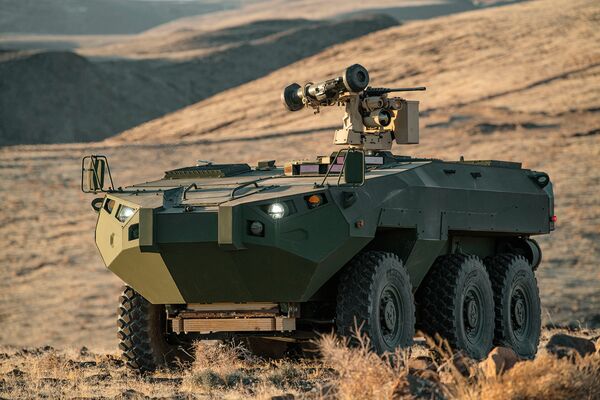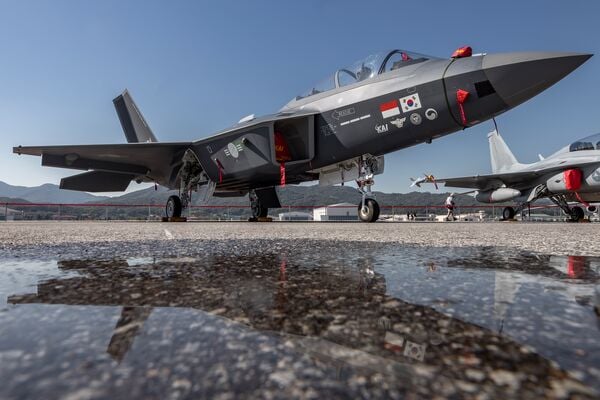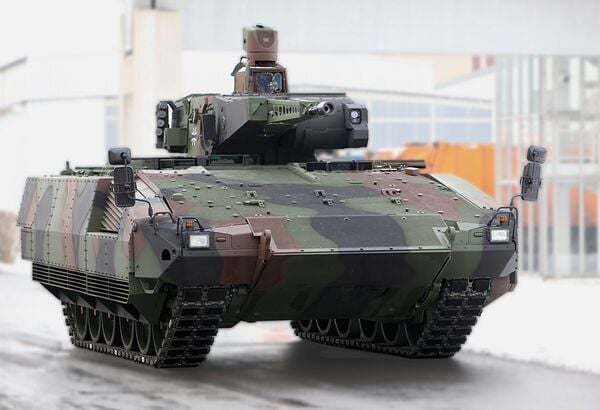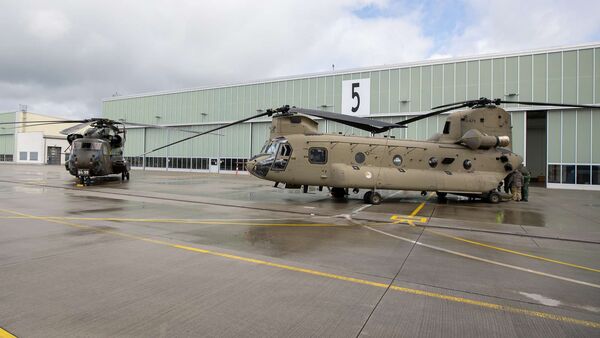- About
- Intara
- Capabilities
- Advisory
- Resources
- News
- Store
USMC details two pathways for future Advanced Reconnaissance Vehicle fleet
19 July 2021
by Ashley Roque
The US Marine Corps (USMC) is moving ahead with plans to design a new Advanced Reconnaissance Vehicle (ARV) and has awarded two companies with prototyping contracts, but has also tasked BAE Systems with studying if the Amphibious Combat Vehicle (ACV) could be modified for the requirement.
The service announced this tentative roadmap on 16 July and said it will begin negotiating 22-month ‘other transaction agreement' deals with General Dynamics Land Systems (GDLS) and Textron Systems for an ARV prototyping phase. Each company will then deliver its vehicles to the service in the first quarter of fiscal year (FY) 2023 and the USMC will spend six months evaluating them.
The USMC officials envision developing a next-generation platform with a combination of capabilities that will enable Light Armored Reconnaissance (LAR) battalions to function as a battlefield manager.
“A key fleet marine force modernisation initiative, the ARV command, control, communications, and computers [C4]/unmanned aerial systems will host a suite of C4 equipment, sensors, and operate both tethered and untethered UAS,” the USMC wrote in an announcement. “The ARV C4/UAS will employ an effective mix of reconnaissance, surveillance, target acquisition, and C4 systems to sense and communicate.”

South Korea announces new aircraft engine factory
19 April 2024
by Akhil Kadidal


A new engine factory being developed by Hanwha Aerospace at Changwon will produce engines for the KAI KF-21 and the TA-50 multirole trainer aircraft. (Zhang Hui/VCG via Getty Images)
Hanwha Aerospace is building a new factory to produce engines for combat aircraft, including the Korea Aerospace Industries (KAI) KF-21 Boramae 4.5-generation aircraft. The new factory is also expected to support the development of South Korea's new domestic fighter engine programme.
Ground was broken for the 16,530m 2 engine production facility at Changwon on 15 April 2024, the South Korean Ministry of National Defense (MND) said on 17 April. The factory is being developed at a cost of USD30 million and is scheduled to be operational by 2025. The MND added that the factory's priority is the licence production of the 92.1 kN (20,700 lb st) General Electric F414-GE-400 engine for the KF-21.
A Hanwha Aerospace spokesperson told Janes on 19 April that “100%” of the licence manufacture of the F414 engine will be achieved at this factory. “The facility is expected to produce approximately 300 engines annually [after becoming operational], the spokesperson added.
Germany orders simulators for Puma IFVs
19 April 2024
by Olivia Savage


The Bundeswehr has ordered 258 sets of AGDUS systems for its Puma IFVs following successful integration tests. (PSM GmbH)
The Bundeswehr is receiving new training simulators for its Puma infantry fighting vehicles (IFVs).
In total, 258 sets of Training Device, Duel Simulator (Ausbildungsgerät Duellsimulator: AGDUS) systems are being delivered for the Puma IFVs by the end of 2026, the Bundeswehr announced on 15 April.
The EUR109 million (USD116 million) contract will be financed from the EUR100 billion Bundeswehr special fund.
A Rheinmetall/Krauss-Maffei Wegmann (KMW) consortium received an order from the Bundeswehr in December 2019 valued at EUR54 million for the provision of six AGDUS systems for integration tests on the Puma. Full-scale serial production of AGDUS would then begin once testing was complete, with up to 252 Puma IFVs being equipped with the systems for EUR88 million.
A Rheinmetall spokesperson confirmed to Janes that the company, along with KMW+Nexter Defense Systems (KNDS) Germany, are supplying the new AGDUS simulators to the Bundeswehr and that full-scale production has now officially begun.
RNLAF helps Luftwaffe prepare Chinook capability
19 April 2024
by Gareth Jennings


A Dutch Chinook (foreground) arrived at Holzdorf Air Base in mid-April to help the Luftwaffe prepare for the arrival of its own Chinooks into the station from 2027. In the background is a Luftwaffe CH-53G currently based at the location. (Bundeswehr)
The Royal Netherlands Air Force (RNLAF) is helping the Luftwaffe prepare for its upcoming Chinook heavy-lift helicopter capability, dispatching one of its own helicopters to the type's future operating station in mid-April.
The Bundeswehr said on 18 April that an RNLAF CH-47F Block 1 Chinook landed for the first time at Holzdorf Air Base (also known as Schönewalde), south of Berlin, to help the Luftwaffe prepare for the arrival of the first of its CH-47F Block II Chinook Standard Range (SR) air-to-air refuelling (AAR)-capable heavy-lift helicopters from 2027 to 2032.
“With the future stationing of the CH-47, Holzdorf Air Base will become a hub for helicopter transport. The [Luftwaffe] is gaining initial experience with the Chinook transport helicopter with its Dutch allies – in flight operations, refuelling, and training,” the Bundeswehr said.
The US Marine Corps (USMC) is moving ahead with plans to design a new Advanced Reconnaissance Vehicl...
Latest Podcasts
Iran Israel analysis
In this podcast Janes analysts discuss the Iranian attacks on Israel on the 14 April. They highlight the military systems used by Iran and the performance and impact of these on Israel. They also discuss the implications of this attack goi...
Listen nowJanes Case Studies
Using Janes Intara to build a common intelligence picture: Russian build up on the Ukrainian border
View Case StudyNews Categories
 C4ISR Details
C4ISR Details